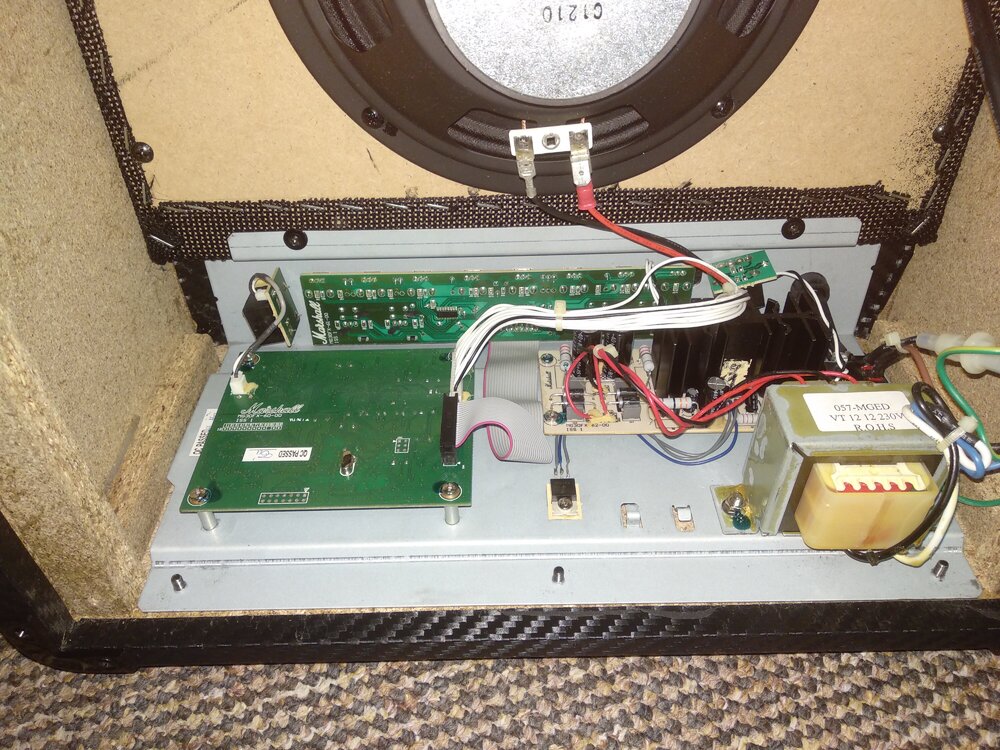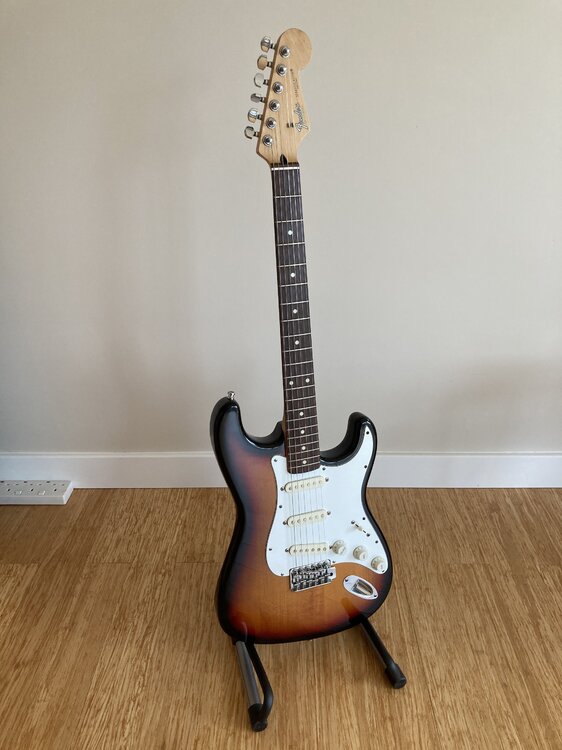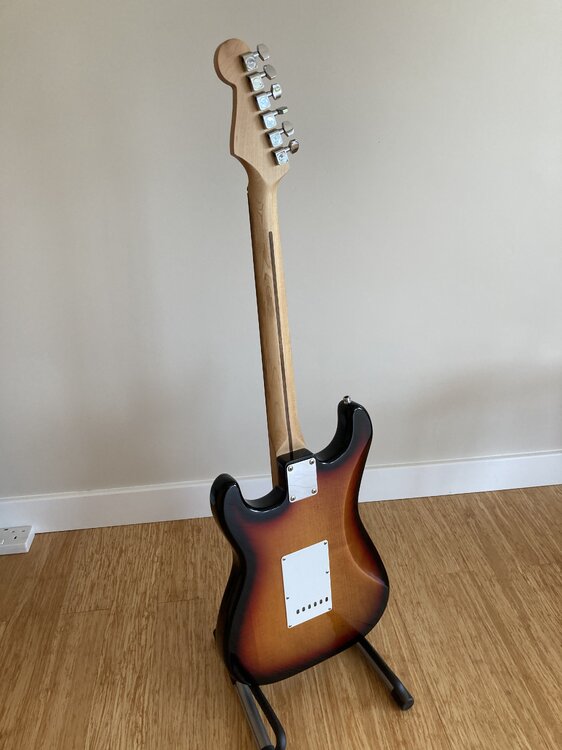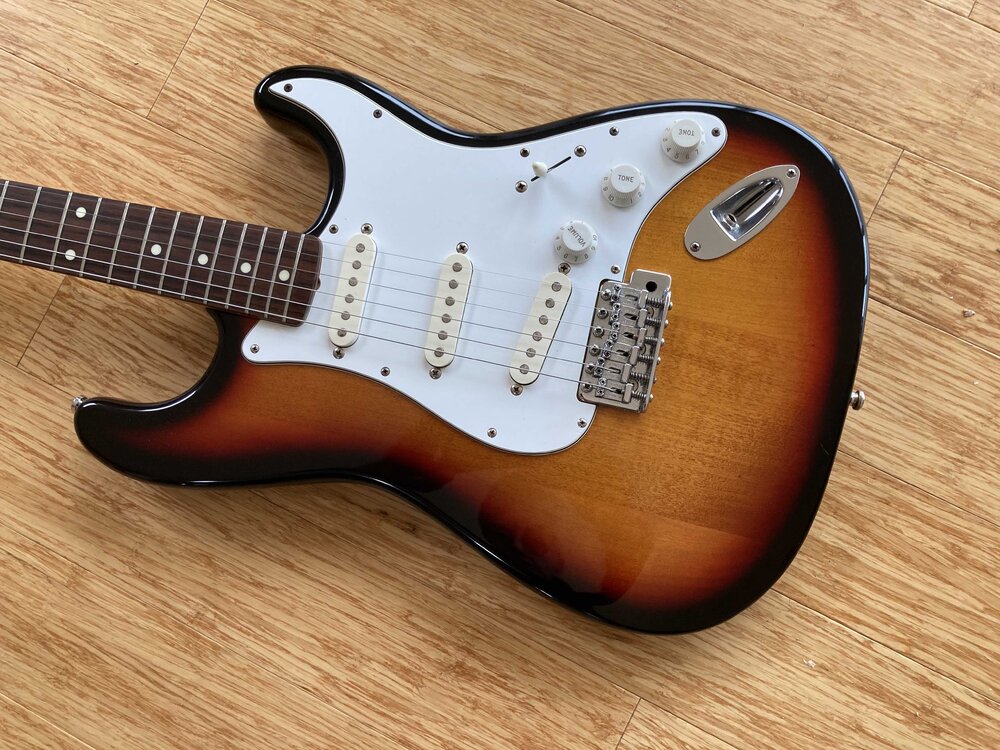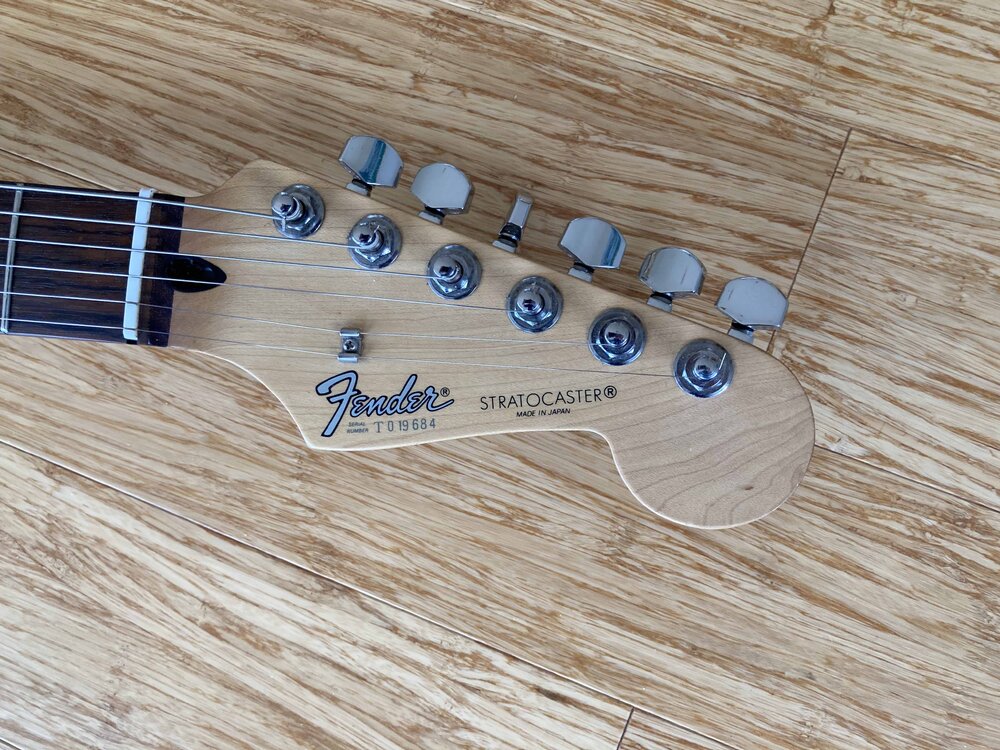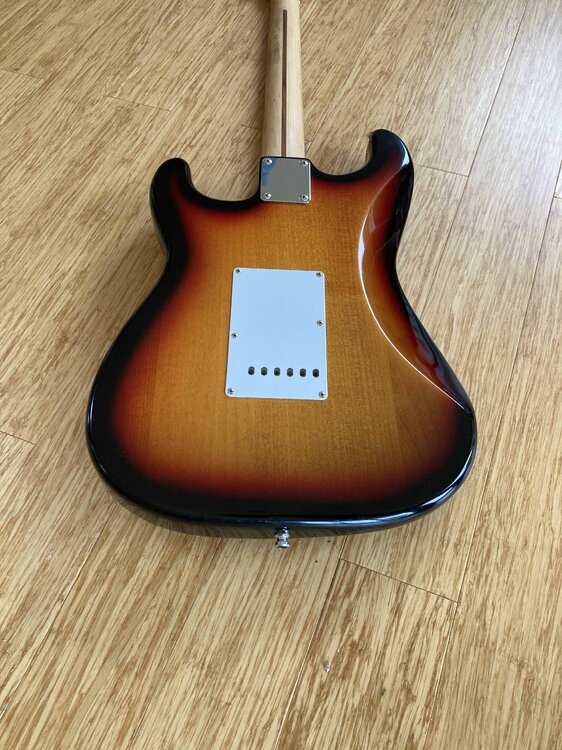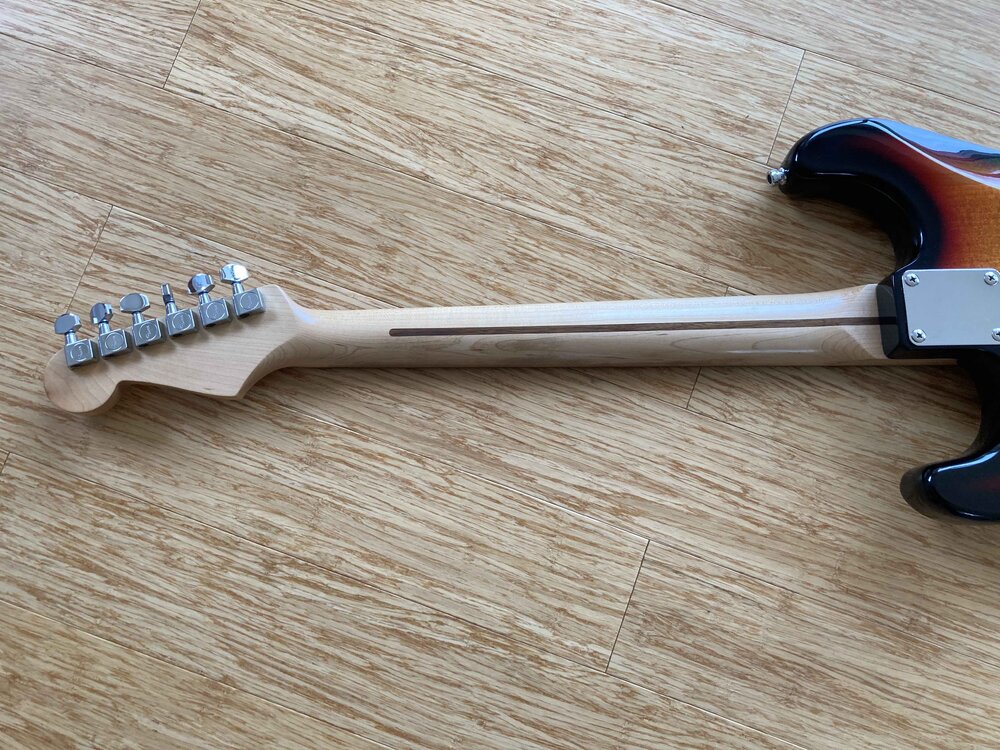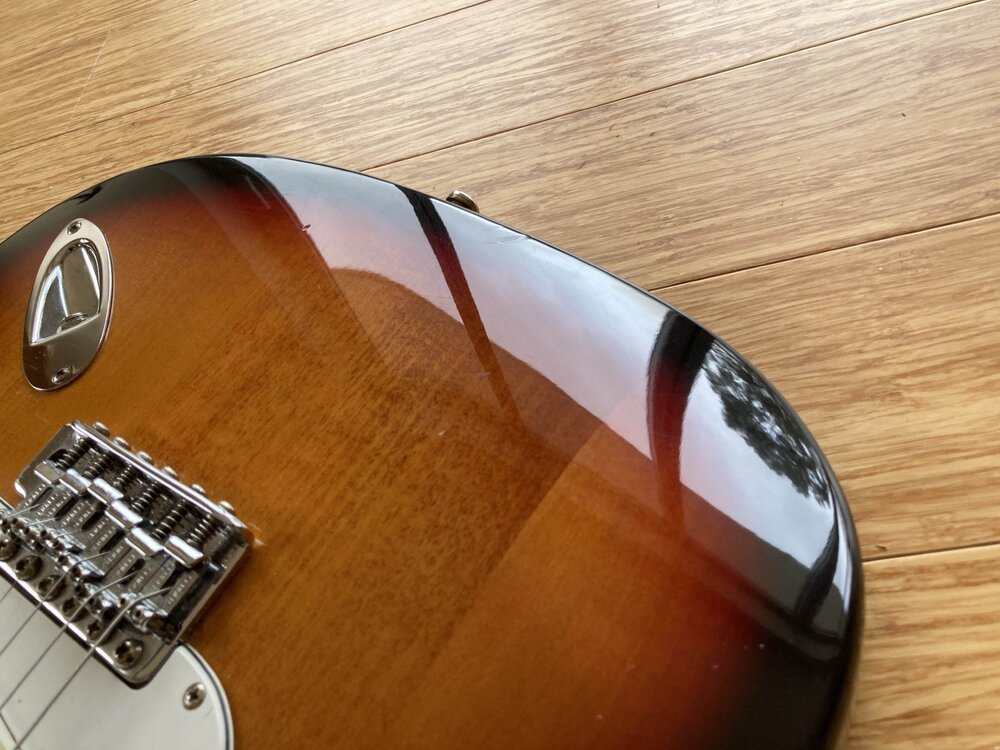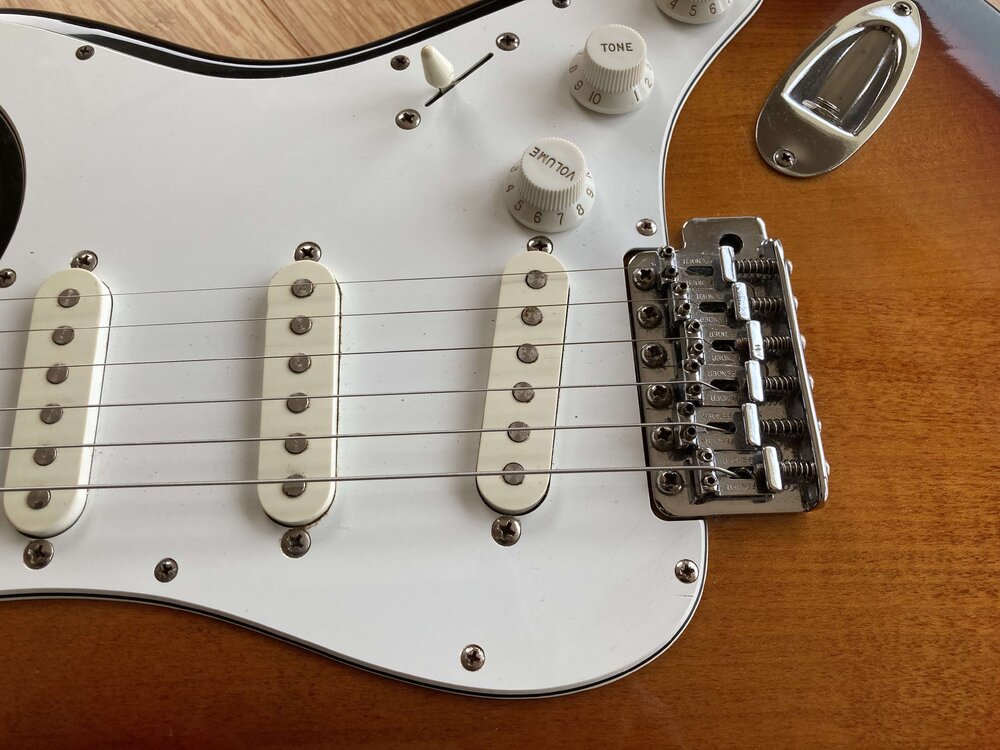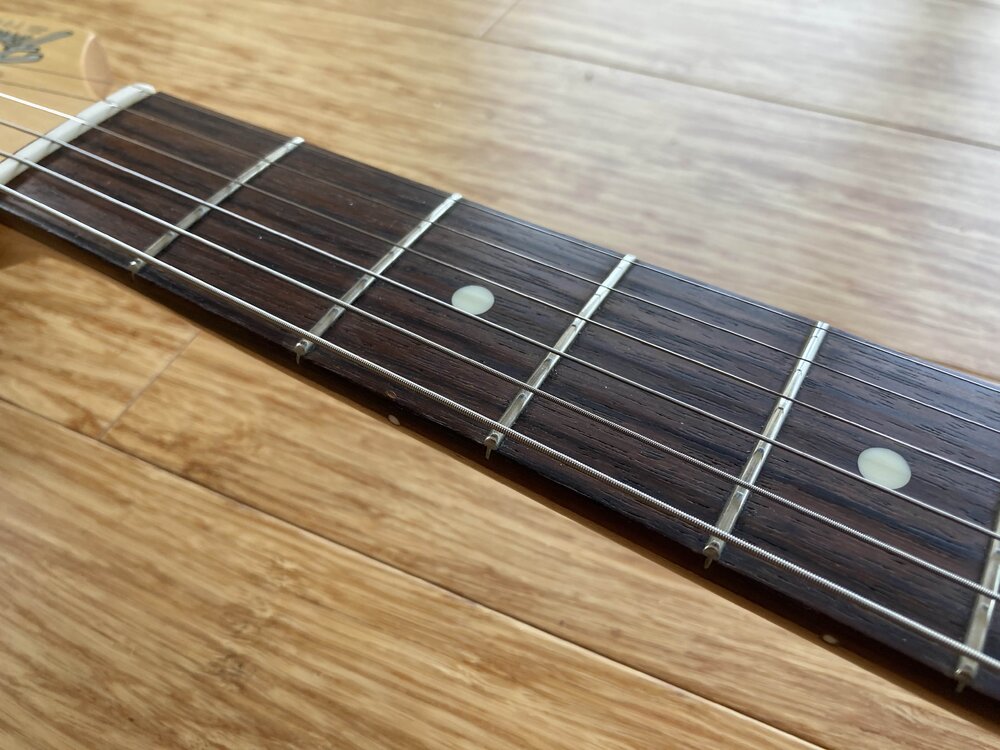Leaderboard
Popular Content
Showing content with the highest reputation on 06/03/23 in all areas
-
You mention 'fast position and chord changes'. My single piece of advice would be to solve this issue by doing things slowly. Slow is the new fast. Slow is the fastest way to do fast. Whatever it is you're wanting to do, do it slowly, preferably with a metronome, or whatever you use for tempo, but set it to slow. Do whatever it is you are wanting to do, slowly, for a while (two, three weeks..? Every day, for ten-fifteen minutes..? Slowly..!). Once it can be done, slowly, well, up the tempo a little. No, just a little (60 bpm becomes 65 bpm, for example...) do this, regularly, for another 'while', and once you've become proficient at it, up the tempo a tad more (65 becomes 70..?). Repeat; if, after a 'while' it's still not smooth, clean, easy, go back down a tad with the tempo and repeat. It is useful, and recommended, to start from the original 'slow' tempo now and again, for a day or so, working back up to one's current tempo, as a refresher. Always with the metronome, or whatever you use for tempo. This is the way to obtain whatever speed one wants, and is the guaranteed fastest way. Is there a downside..? Yes, it requires a large bucketful of Patience. Those without this essential accessory will not achieve their goal, so be sure to have that bucket, and keep it well topped up. It is of no advantage to do this for hours on end, nor too many times a day, but if time permits, a couple or three sessions of 10-15 minutes (no more...) may be permitted. The key is in the regularity (every day...), in the keeping the tempo slow (hence the metronome or equivalent...) and the Patience. It cannot, and never does, fail. Douglas3 points
-
If your MG15CFX is suddenly dying after playing a while, this might be how to fix it. !!! WARNING !!! Guitar amplifiers contain high voltages and can cause injuries which are potentially lethal. Do not attempt repair work or modification if you are not a trained professional. The OP is not responsible for any damage or injury caused upon using the information provided. !!! YOU HAVE BEEN WARNED !!! Hi everyone, I have recently been working on a Marshall MG15CFX for a friend, quite a nice little practice amp. The issue was this - you would play the amp for a while, say 30 mins, and suddenly the sound dies and it goes really really quiet. After turning it off and on again, it would work again for a couple of minutes, until it goes dead quiet again. Sounds familiar? Well this might be of use to you. There seem to be some older posts in the Marshall forum that may (or may not) relate to this issue, but I didn't want to post there because of some of the things I am about to say about this product. Now, the case with the MG15CFX is this: the amp going quiet is actually the power stage going into thermal shutdown to protect itself from overheating; but let me take it from the top. I will explain a little bit the troubleshooting involved here so you can better test this yourself if you have one of those. The amp essentially consists of 3 main parts: i) the preamp, ii) the power amp and iii) the digital FX section. After playing the amp for a bit, when it eventually went quiet, I was still hearing a little bit of the guitar, with all the overdrive and the distortion form the preamp and FX section. This made me suspect that the problem lies with the power stage. Fortunately, the amp has a 3.5 mm Jack input for playback from an external device, so I hooked up my phone and played music through the amp until it eventually went quiet. Although the schematic for the amp isn't available anywhere, it is reasonable to assume that the playback input isn't connected to any of the FX or preamp circuitry, since it is unaffected by any of those settings (I tried to trace the tracks, but eventually got lost, but that doesn't matter for now anyway.) So this was a further hint at the power stage being the problem. After taking the amp apart and visual inspection, I found nothing obviously wrong, but the interesting bit is this: on the power board, the output transistor IC shares a heat sink with a linear voltage regulator. The voltage regulator supplies 5V to the digital circuitry in the FX section. But it's doing so by regulating 18V down as it's being supplied by the positive DC rail - If it's dropping 13V of course it gets hot pretty fast! And with the rather small heatsink and both ICs sitting back to back, of course the output transistor will go into thermal shutdown to protect itself. Technically, the output IC is exactly doing what it is supposed to in this scenario. So the amp is not as much broken as it has a fatal design flaw. Come on Marshall, you have clearly never tested this, this is very poor engineering. The way I fixed it: it's relatively straightforward, we just need to get rid of the heat and the problem shouldn't come back. Luckily, we have a very big heatsink at our disposal: the chassis itself. So I took out the voltage regulator (unscrew from heatsink, de-solder from PCB) and put it on the chassis instead. I was even able to repurpose the thermal pad still on the heatsink, you can remove it if you're careful with the right tool. Then connect wirs from the tabs of the voltage regulator back to the PCB (make sure to confirm which of it's legs is the input and which one is the output before you re-solder, these are the two legs on the outside, the middle one is ground) A photo is attached below, but I also recommend putting on some heatshrink to cover the exposed contacts on the regulator. After taking some measurements, the current draw seems to be about 100 mA, just to inform your choice of wire gauge. I have tested the amp for a continuous 90 mins of music playback at reasonable room volume (master around 9-10 o'clock) and the problem has not re-occured. It also didn't get nearly as hot anymore, both heatsinks are now doing their job, and so I assume it's fixed and works properly now. But yeah, the biggest disappointment is Marshall's engineering flaw embedded in this amp. It is a little surprising that no one caught on to this sooner and that they have been selling a product like this (I think it's discontinued now.)1 point
-
Hello everyone. I have been repairing guitars for over 25 years and thought it would be time to join this guitar chat as many clients have been talking about it. I thought it may be of interest if I get any interesting guitar and jobs in to shear it with everyone. i have my own workshop and also travel to clients houses and offer a collection and delivery service so I see loads of guitars from week to week.1 point
-
I like the sound of it to answer @R32and it's nearby! It does have some knocks on the front and the case is original but in bad condition..so I'll throw in a low offer around 1200€. Thanks for your help @Dad33531 point
-
100% agree with @Dad3353. Slow with metronome will show you almost immediately where smooth transitions on beat are falling over. It allows you to examine hand and finger movement and work on the harder transitions that are breaking the rhythmic flow. Use the 'slow gets you fast' approach to look at economy of movement - how far you lift fingers, pivot fingers that stay on that string and act as the reference for the other fingers to find their way... etc. Same with picking hand - developing economy picking (least possible movement) or the same principle if finger picking. Even if you aren't chasing blistering speed (I don't) the slow to fast approach is golden. Had it hammered into me many years ago studying flamenco. If you can't play it really well slow, you'll never ever play it well fast.1 point
-
Like ezbass says, string choice will be down to personal preference. I have a set of 9-42 Ernie Ball Super Slinkys on my Harley Benton TE-20 and D'Addarrio 10-52s on my Ibanez AS-73.1 point
-
Just sold the Tele, one more to go!! Guitarchat exclusive - reduced to £500. I have a pressing 'need' for a blackface Princeton. So, a '96 Fujigen MIJ Strat - absolutely original and in very good condition. There are a few small dinks in body paint but no chips at all. Slight neck wear (laquer on back) and light fret wear but loads of fret left and action is low with no buzzing. Had a new vol pot fitted as original was noisy - new one is a CTS (Fender US spec) and all is now good. Has the correct trem arm - sorry not shown in pics. This guitar is serious quality, the rosewood neck is dark, dense and wonderful. Fit and finish is excellent - that's what the Fujigen guitars are famous for. Price is very slightly elastic - prefer to deal with the Basschat/Guitarchat community. The few others on offer are all listed 750 upward so this should be worth a look? It has a gigbag - packing to ship would be difficult so local or maybe meet up? Only trade: Fender blackface Princeton, cash your way.1 point
-
Hi Tom, good to have you here. I hope you enjoy the ride! I could actually do with some advice since you're a pro. My guitar fell the other day and the neck broke in two pieces. Now I fixed the problem with some sellotape but intonation isn't perfect any more. What did I do wrong?1 point




